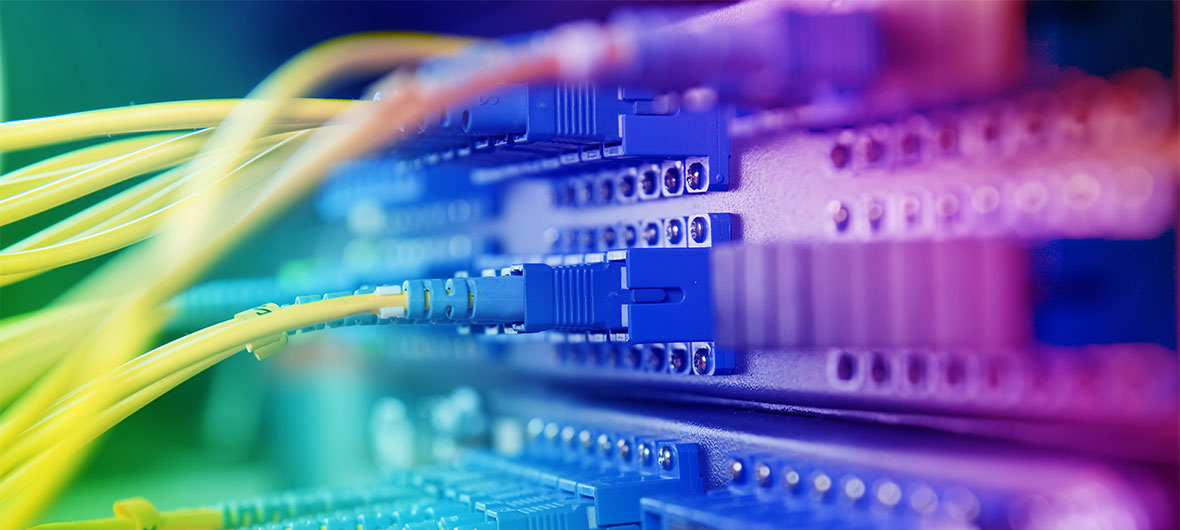Principalele tendinte in telecomul romanesc in 2016: ce spun analistii si operatorii

„Romania este cu mult inaintea altor tari din Occident in privinta pietei telecom”, spune unul dintre cei mai cunoscuti manageri din telecomul romanesc. Ei bine, da. Romania este in fata altor tari europene in privinta tehnologiei, a competitiei determinate de preturi, dar si in raport cu dorinta romanilor de a folosi cele mai noi dispozitive. Cititi mai jos o analiza despre ce trenduri vom vedea anul urmator pe piata de telecomunicatii, dar si ce tendinte din strainatate ar putea aparea pe viitor si in Romania.
Unul dintre cele mai dinamice domenii, telecomul are in acelasi timp cateva trasaturi valabile de cativa ani.
Este vorba de cresterea continua a traficului de internet fix si mobil, utilizarea a tot mai multe dispozitive mobile in special a smartphone-urilor si tabletelor, dar si scaderea preturilor pe masura ce concurenta a crescut.
Consum hedonistic de servicii telecom
„Cererea de servicii digitale va ramane neuniforma si profund eterogena in Romania, imbracand intreaga paleta de situatii, de la utilizatori intensivi si utilizatori centrali (de masa), la utilizatori marginali, pe fondul mentinerii non-utilizatorilor la niveluri semnificative. Consumul hedonistic, in care alegerile si deciziile de consum au la baza atitudini si experiente fata de serviciile de comunicatii, mai degraba decat criterii pur practice, utilitariste, va coexista cu sensibilitatea sporit la pret, pe fondul multiplicarii echipamentelor conectate”, afirma Catalin Marinescu, presedintele Autoritatii de Reglementare in Comunicatii (ANCOM).
Aceeasi organizatie a realizat o clasificare a profilului consumatorului roman de servicii telecom ceea ce a dus la trei tipuri de utilizatori: mediu, ocazional si intensiv. Astfel, utilizatorul mediu consuma lunar 155 MB trafic de internet mobil, trimite 72 de SMS-uri si suna in medie 249 de minute. Un utilizator ocazional consuma lunar 52 MB trafic de internet, trimite 24 de SMS-uri si suna in medie 82 de minute, in timp ce un utilizator intensiv consuma lunar 465 MB trafic de internet, trimite 216 SMS-uri si suna in medie 747 de minute.
Pe de alta parte, cei de la RCS&RDS, cel mai mare operator de televiziune si internet de pe piata locala, spun ca utilizatorii companiei folosesc de trei ori mai mult internet decat media pietei.
23 de milioane de cartele de telefonie mobila, 16 milioane de utilizatori de internet, 7 milioane de case cu televizor
“Un utilizator mediu al nostru foloseste in jur de 500 de Mbps pe luna, adica precum unul intensiv la nivel de piata. Pe de alta parte, un utilizator intensiv din reteaua noastra ajunge sa foloseasca 1,5 GB lunar, de trei ori mai mult decat media pietei. Acesta este un consum natural, nu unul limitat de restrictii de pret”, spune Valentin Popoviciu, directorul de dezvoltare al RCS&RDS. El adauga ca, daca operatorul ar fi avut preturi cu 20-30% mai mari, penetrarea serviciilor nu ar fi avut acelasi succes in Romania.
La finalul anului trecut, in Romania erau 23 de milioane de cartele SIM de telefonie mobila, peste 16 milioane de utilizatori de internet de mare viteza (dintre care 12 milioane de utilizatori de internet mobil, restul de internet fix) si aproape 7 milioane de gospodarii abonate la servicii de televiziune, potrivit ANCOM.
Clientii de business vor cloud si machine-to-machine. Clientii rezidentiali streaming si continut pe ecrane mari
„Cererea de internet fix de calitate si de mare viteza pe segmentele rezidential si de afaceri ca continua sa creasca intr-un ritm sustinut. Aceasta deoarece mediul de afaceri adopta progresiv servicii si aplicatii bazate pe cloud, machine-to-machine si machine-to-people din ratiuni de eficienta, iar mare parte din largimea de banda folosita de persoanele fizice este data de streaming, vizualizarea de continut online, pe ecrane tot mai mari si cu rezolutie tot mai buna, in detrimentul transferului de fisiere”
Astfel, tocmai datorita dezvoltarii serviciilor de internet, Vodafone, al doilea operator de telecomunicatii de pe piata locala, a lansat de curand un nou portofoliu de servicii de business (denumit Industria 4G) si cuprinzand olutii de gestionare a stocurilor, semnalizare video, supraveghere video si monitorizare a flotei.
Pe zona de business se vor dezvolta serviciile machine to machine, dar si cele de timp cloud.
“Gradul de adoptie in Romania al serviciilor cloud era sub 10% in 2013, insa, in urmatorii ani, ne asteptam la o crestere semnificativa, tinand cont de faptul ca se va da unda verde la fondurile europene, pentru perioada 2014 – 2020. Estimam o crestere semnificativa a cererii din partea firmelor mici si a institutiilor publice, odata ce Comisia Europeana a stabilit regulile de finantare a proiectelor din IT in 2014”, explica Nazmi Caglar Boluk, CEO Euroweb Romania, unul dintre cei mai mari furnizori de servicii de business de pe piata locala.
De altfel, UPC Romania, unul dintre principalii operatori telecom de pe piata locala, a lansat de curand Active Play TV, un serviciu in cloud care permite difuzarea de continut si care se adreseaza mai ales companiilor dĩn industria hoteliera, de sanatate si wellness, universitati si institutii de administratie publica.
Investitii in infrastructura si colaborari intre retele pentru a reduce costurile
“Investitiile in infrastructura facute de operatorii telecom din Romania vor creste in intensitate in urmatoarea perioada, in conditiile in care calitatea retelelor este o prioritate, un bun strategic si un diferentiator esential pe o piata cu un nivel foarte mare al concurentei. De asemenea, ritmul tot mai alert in care se fac investitiile determina o colaborare mai stransa intre furnizorii de servicii telecom, in incercarea de a face economii. Sumele de bani alocate de operatorii telecom imbunatatirii infrastructurii ajung pana la 10% din veniturile anuale. Nivelul mare al competitiei obliga insa companiile telecom la o colaborare mai stransa care le-ar putea genera economii de 5% – 7%. Zonele de maxim interes pentru operatorii telecom pentru urmatoarea perioada vor fi 4G, 4G+, centre de date si cloud”, mai spune Caglar Boluk.
De altfel, Euroweb se va concentra in urmatorii ani pe servicii cloud, securitate informatica si centre de date. Pe de alta parte, cei mai mari operatori telecom de pe piata, cei patru gigantic-Orange, Vodafone, Telekom si RCS&RDS, se vor baza in urmatorii ani in special pe cresterea retelei de internet mobil 4G si 4G +, fiecare dintre aceste companii avand anual bugete in jurul a 100 de milioane de euro pentru investitii in retea. De exemplu, pentru anul viitor, RCS&RDS a anuntat un buget de circa 150 de milioane de euro. Acesta este deocamdata estimat, nu si aprobat.
“Odata cu extinderea retelelor, vor fi lansate noi cetegorii de servicii in functie de tipul operatorului si portofoliul acestuia. Astfel, companiile de telefonie fixa vor face investitii in elementele de baza ale unei retele, astfel incat sa poata oferi mai bune servicii TV sau viteza mai mare la internet, marind capacitatea retelei broadband. Pe de alta parte, in perioada urmatoare, operatorii de telefonie mobila vor pune accent pe servicii de tipul 4G+ sau VoLTE (Voice over LTE), atat de necesare intr-o piata in care numarul utilizatorilor de smartphone a crescut semnificativ in ultimii doi ani”,
Telecom si banci = servicii financiare pe mobil
Ultimii trei-patru ani au adus insa tot mai multe discutii intre operatori si banci si despre posibilitatea ca acestea sa lanseze servicii in comun. De exemplu, Vodafone a lansat anul trecut M-Pesa si in Romania, un serviciu pentru transfer de bani care are foarte mare succes in tarile in curs de dezvoltare din Africa si Asia, adica in acele zone in care populatie are foarte putin acces la sucursale bancare. Romania este de altfel prima tara europeana in care compania a lansat M-Pesa. Acesta este un instrument de baza, dar operatorii vorbesc, de asemenea, de servicii de tip NFC, adica posibilitatea de a folosi telefonul pentru achizitia de diferite produse sau servicii, adica utilizarea telefonului pe post de card bancar. Orange si Telekom au anuntat ca vor lansa in cateva luni servicii de tip mobile money, insa nu au precizat in ce vor consta acestea.
“Unul din cele mai puternice trenduri din pietele dezvoltate, prezent si in zona Europei Centrale si de Est si pe cale de dezvoltare pe piata din Romania, il reprezinta convergenta pietei de telecomunicatii cu cea de servicii financiare, industrie cunoscuta pentru investiile majore in domeniul telecomunicatiilor. In incercarea de creste performanta si profitabilitatea prin diversificarea serviciilor oferite, operatorii telecom, inclusiv cei din Romania, au inceput sa ofere servicii de mobile banking si stock trading. Astfel companiile de telecomunicatii pot sa reduca rata de pierdere a clientilor, coreland serviciile oferite cu servicii bancare durabile, sa isi creasca cota de piata, oferind servicii suplimentare atractive si sa isi creasca profitabilitatea, crescand vanzarea de smartphone-uri si oferind pachete integrate care sa includa si servicii financiare”, explica George Dorobantu, Director, Servicii de Consultanta pentru Management, PwC Romania.
Servicii OTT, precum Netflix sau Hulu, si in Romania
Alte trenduri importante, atat in strainatate cat si in Romania, sunt utilizarea modelelor noi de distribuitie, precum OTT (over-the-top). OTT este un model de distributie audio si video prin internet, dar care nu implica un operator telecom. Cele mai cunoscute astfel de platforme sunt Netflix si Hulu.
“Observam aparitia si cresterea companiilor de tip Over-the-Top care furnizeaza aplicatii sau servicii prin internet, abordare diferita de cea traditionala ce presupune existenta unei retele de acces dedicate, detinuta de catre compania ce ofera serviciul. Aceste companii non-traditionale detin deja 10% din veniturile industriei, aceastea fiind preconizate sa se creasca semnificativ in urmatorii ani”, spune Dorobantu.
El afirma ca in urmatorii ani principalul factor de crestere pentru piata de telecomunicatii va fi utilizarea smartphone-urilor, in prezent in jur de jumatate dintre romani folosind un smartphone.
Internet of things si big data
Utilizarea smartphone-urilor duce la folosirea accentuata a serviciilor de internet mobil, atat a celor simple precum citirea de stiri sau accesarea retelelor sociale, dar si a celor de tip big data analytics si internet of things. Internet of things se refera la conectarea prin internet a mai multe sisteme. De exemplu, prin IoT, poti selecta pe smartphone ca atunci cand ajungi acasa sa fie becurile aprinse, ca aerul conditionat sa fie pornit sau poti vedea ce alimente mai sunt in frigider.
“Trendurile cele mai importante pe piata internationala de telecomunicatii si pe care le vom vedea si in Romania sunt reprezentate de internetul mobil de mare viteza (4G/LTE), servicii machine to machine (M2M), cloud computing, Internet of Things (IoT) si OTT, precum si convergenta pietei de telecomunicatii cu piata de servicii financiare. Se preconizează ca in 2016 cloud computing-ul va deveni universal prezent in pietele dezvoltate, fenomen ce se va resimti si in piata de telecomunicatii din Romania. De asemenea in pietele dezvoltate, implementarea universala a serviciilor digitale a dus la aparitia si dezvoltarea conceptelor de M2M, IoT si OTT, care se asteapta sa culmineze in aparitia caselor, cladirilor si oraselor „inteligente”. Astfel de tehnologii se afla inca in stadiul incipient pe piata din Romania, raspandirea lor urmand sa se accelereze odata cu implementarea serviciului de transfer de date 4G LTE-Advanced”, afirma managerul PwC.
In ceea ce priveste retele de comunicatii, Romania are unele dintre cele mai performante retele fixe de banda larga din lume si cele mai bune din Europa
“Este de asteptat ca aceasta situatie favorabila sa continue chiar si in contextul cresterii semnificative a numarului de utilizatori. Viteza de conexiune medie in ora de varf inregistrata in primul trimestru din acest an in Romania prin retele fixe a fost de 71,6 Mbps (top 5 mondial), iar la finalul anului 2014, 49,5% din conexiunile fixe de banda larga permiteau viteze mai mari sau egale cu 100 Mbps. Retelele de acces vor beneficia de introducerea progresiva a FTTH(n.red. cablu prin fibra optica) in retelele fixe si a LTE (n.red. tehnologia 4G) in retelele mobile, in paralel cu coexistenta celorlalte suporturi pentru asigurarea conectivitatii: cablu, cupru, UTP/FTP in retele fixe, GSM si UMTS in retele mobile. Acoperirea cu retele LTE a populatiei va creste de la peste 60% la finalul anului 2014, pana spre 95% in 2018 , iar acoperirea LTE-Advanced va depasi 50% din populatie la aceeasi data”, spune Catalin Marinescu, seful ANCOM.
Focus pe tranzactii
George Dorobantu afirma ca unul dintre principalele trenduri din piata de telecomunicatii din Romania il reprezinta consolidarea pietei, marii operatori incercand sa ofere servicii cat mai complete.
“Aceasta tendinta este observabila in tendinta marilor operatori de a intra in parteneriate, precum si interesul pentru fuziuni si achizitii”, adauga el.
De atlfel, UPC, unul dintre cei mai mari operatori telecom de pe piata locala, a cumparat de curand operatorul de cablu Novasat din Suceava, compania adaugandu-si astfel 20.000 de abonamente (servicii) la cele 1,97 milioane de abonamente pe care le are in prezent. In prima jumatate a acestui an, operatorul a mai cumparat 21.000 de servicii de televiziune si internet prin preluarea retelelor Tita & Company si Green Zone din localitatile Mizil si Urlati, judetul Prahova si retelelor Olcab si Century Net din judetul Suceava.
“Ne concentram atentia pe extinderea ariei de acoperire a serviciilor noastre atat prin crestere organica si extindere de retea, cat si prin achizitii de mici operatori. Liberty Global are incredere in piata din Romania si potentialul sau de crestere, iar achizitionarea retelei Novasat vine sa sustina acest angajament. Vom continua achizitiile si investitiile in infrastructura, pentru extinderea zonei de acoperire a retelei noastre – in 2015 am planificat peste 35 milioane de euro”, afirma Robert Redeleanu, CEO al UPC Romania.







